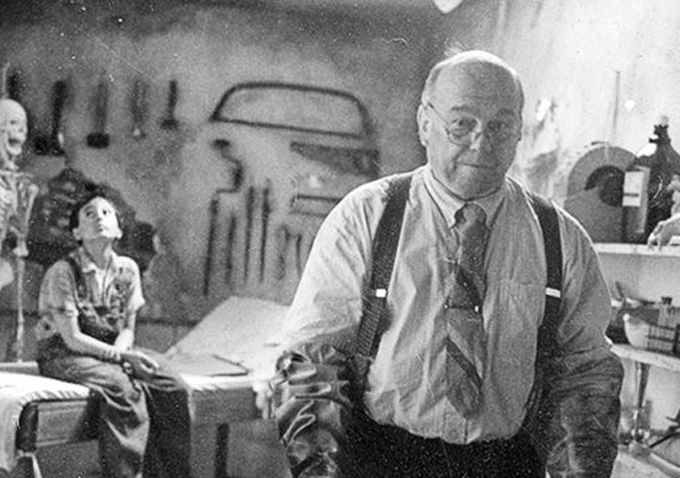
Jonathan Mallory Sinus is
credited as the “folklorist” responsible for the vignettes that follow at the
beginning of “Go Down Death.” What follows is a beautiful woman applying makeup and a man on guitar. Some of
the world’s greatest filmmakers would argue that these are the only elements
one needs to make a great film. The picture continues through its opening
credits, introducing us to a doctor that over-shares with a kind-eyed boy, and a
double-amputee emphasizing liberation from his own legs as if his body were
originally a vessel for a lie. Director Aaron Schimberg’s credit appears over
the screams of a woman trapped inside a car, fighting for her life. This is a
filmmaker with a very specific sensibility with regard to mortality.
The picture slowly reveals
itself as existing in a limbo between life and death, with a cast of characters
waiting out what feels like a temporary state of mind. Some bicker at a table
while playing cards. Two soldiers stalk the woods while fighting an unseen war.
A woman sings about being “too young to die,” a song that consists of only
those lyrics as if heard in a dream. Most speak in dialogue that sounds like
detached song lyrics. “Go Down Death” isn’t necessarily about speakers, but
about listeners: Schimberg’s camera enjoys capturing the furrowing of a brow,
the quiet serenity of the thinking mind.
A shapely prostitute recoils
nude after intercourse, sharing company with a comfortably-naked older man who
has a greater interest in smoking while discussing long-forgotten memories than in comforting her. His nudity seems indicative of the vulnerability of his age;
she, younger, covers up in the fetal position, not interested in exploring a
past that involves a dead twin sister. She is beautiful, wounded when we
meet her. His shaggy hair and comfort in his skin suggests he’s shed the
world beyond him. A classroom of children illustrates the same; kids who
casually mention two of their group have passed on, before they trade passages
of poetry concerned with death.
The characters speak of
haunting frequently. One describes himself as being mistaken for a demon, one
who recurs in dreams. Later, two characters utter the same line about being
haunted but never being allowed to haunt another. Most seem to just be passing
through: they act as if they have fully-established relationships with each
other, when it seems clear they are merely drifting past unions on to partial or
complete strangers. One character speaks of Sinus as if he were a fellow
soldier, returned as a ghost; he says it’s a “story.” It leads to a breakdown
in communication, suggesting the artist is aware of his own shortcomings from
within the text.
About fifty-something minutes
in to “Go Down Death,” which is largely plotless, the film begins to jump in
shorter, darker bursts. The camaraderie between each character slides away,
replaced by an adversarial mistrust, until the story is accompanied by the
flickering of a film, projected onto the side of a barn for children. “Go Down
Death” closes with a bewildering fifteen or so minutes that may or may not be
related to the previous seventy, a passage of film of which I am eager to hear
multiple interpretations from a variety of voices.
Sinus, of course, is not a
real person, and there is no evidence of his “writings” in the real world. Yet “Go Down Death” seems like a tribute to a false creator, teaming all of his
creations in a purgatory where their stories, already ended, are permitted to
go on. When one character loses her senses before sex, another remarks that it
has happened to him before. It’s the tapestry of death, one where our creations
mingle in the mind long after our passing, the idea of artistic permanence in
the afterlife. This is a unique, strange, unforgettable film, a half-remembered
dream that will trouble and beguile the subconscious long after you’ve moved
on. Fans of “Eraserhead,” or the avant-guard eccentricities of Crispin Glover’s
infamous traveling art projects, will have found a kindred spirit in director
Aaron Schimberg. [A-]
This is a reprint of our review from the 2013 Fantasia Film Festival.


